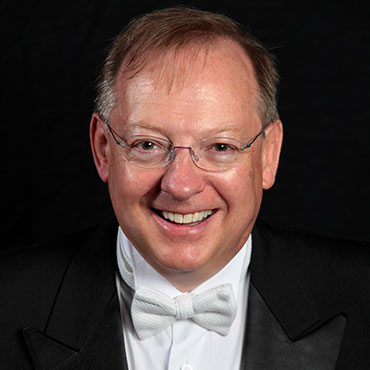Here’s an idea: Let’s change the name of Bach’s Mass in B Minor to the Mass in D Major. Just because convention calls for a piece to be named after its beginning key doesn’t mean that the ending key wouldn’t be a better name if it represents the idea of the composition better. It might even get more of an audience that way.

The Baltimore Symphony Orchestra, with the help of the Baltimore Choral Arts Society, is pulling out the essential, ultimate joy of Bach’s herculean setting of the Ordinary of the Mass this week. The BSO’s first performance Thursday evening at The Music Center at Strathmore nicely got at the way that Bach leads from serious contemplation and doctrinal creed into sunlight and glory over the course of the Mass’ nearly two hours. Baltimore audiences have a chance to catch the same performance Friday and Saturday evening at Meyerhoff Symphony Hall in Baltimore.
Principal credit for making sure this great work of Johann Sebastian Bach expresses proper reverence but doesn’t get bogged down in ponderous religiosity goes to three elements of the assembled forces: guest conductor Nicholas McGegan, soprano soloist Yulia Van Doren, and the specially assembled woodwind section of the BSO.
The sprightly McGegan has a real feel for the arc of a performance of sacred texts. When he wants the music to “bloom” he indicates that with broad circles of his arms, and at one point he quite literally started marching in place on the podium to demonstrate a tempo rather than just “conducting” it.
Vocalists in particular appear to really enjoy performing for McGegan. The members of Baltimore Choral Arts arrayed behind the orchestra rather than in the balcony above them clearly put real, specific meaning into the Latin text. (Bach repeats most of the lyrics many times although in endless variation of counterpoint, and English translation is given to the audience in a handout, so the work is not nearly as forbidding to comprehend as it may seem at first.)
The many D major sections that appear well before the ending also had a nice propulsion under McGegan’s leadership. Maybe that’s not surprising since McGegan entertainingly came just a hair away from running Beethoven’s Ninth Symphony off the rails with the BSO last year. He does like to keep the proceedings moving along, which modern audiences probably appreciate.

For her part, Ms. Van Doren had numerous winning solos, starting with the Laudamus te (“We praise you”) section of the Gloria of the Mass. The Russian-American soprano’s voice has a sparkling rather than warbling, indeed almost a theatrically mellifluous quality to it. She sometimes appears to anticipate the end of phrases just a moment too early and the last word drops away earlier than you’d like. But that may be attributable to the first performance of the week in such demanding repertoire, and the fullness of the phrases will probably round out in the Baltimore performances.
A frequent combination during the Mass of two of the four soloists was not always quite as effective as Ms. Van Doren’s solos. The BSO slated South African countertenor Christopher Ainslie into the mezzo solo slot of the Mass in B Minor in what was Mr. Ainslie’s BSO debut. On its own Mr. Ainslie’s voice is close to the leading countertenors heard in Baroque repertoire. But in combination with Ms. Van Doren his voice sounded plainer and less expressive than hers, and sometimes simply underpowered. A substantial duet in the Credo section of the Mass did not quite come across with the fantastic Bach inventiveness among the two soloists as it could otherwise.

Ms. Van Doren combined more effectively with American tenor Thomas Cooley in duets such as Domine Deus, rex coelestis (“Lord God, heavenly king”). Young American bass-baritone Dashon Burton, in the relatively limited bass work called for in the Mass in B Minor, showed a lovely and markedly clear tone in higher ranges, with greater power probably still to develop in his career in more profound tones.
The Mass in B Minor calls for a very specific subset of the full symphony orchestra, with several kinds of oboes, flutes and bassoons arrayed in front of Mr. McGegan and often intertwining in the vocal solos and duets. All of these passages were handled well, but particularly and predictably by the BSO’s fantastic principal oboist, Katherine Needleman.
Baltimore Choral Arts and/or Mr. McGegan chose a very effective size of about 55 singers to put across the larger sections of the Mass, keeping better focus on the lyrics than bigger choruses sometimes do in overwhelming the music in a wall of vocal sound. The only risk at Strathmore of this size is that the trumpet sections of the Mass – very frequently heralding the return of D major – sometimes wiped out the choral sound for a moment or two. This may be less of an issue at the Meyerhoff, however. By whatever convention it acquired its name, the Mass in B Minor is one of the monuments of Western music, and credit to these Baltimore-based organizations for presenting it in Montgomery County’s leading performance venue last night.
Running Time: Two hours and 10 minutes, with one 20-minute intermission.
Bach’s Mass in B Minor was performed by the Baltimore Symphony Orchestra with the Baltimore Choral Arts Society on Thursday, May 26, 2016 at The Music Center at Strathmore – 5301 Tuckerman Lane in North Bethesda, MD. The performance will be repeated on Friday, May 27, 2016 and Saturday, May 28, 2016 at the Joseph Meyerhoff Symphony Hall – 1212 Cathedral Street, Baltimore, MD. Purchase tickets for the performances in Baltimore online. For the BSO’s complete upcoming concert schedule, see their ticket calendar.




